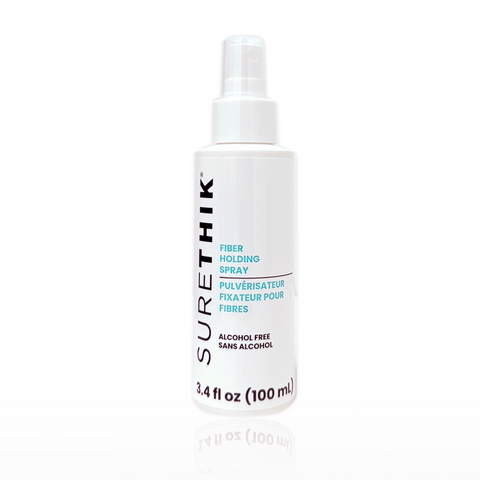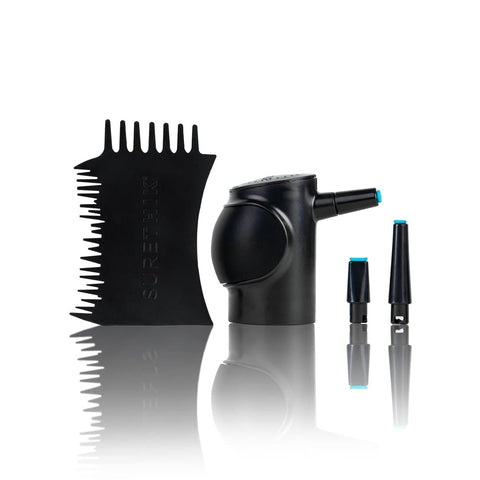
Female Versus Male Pattern Baldness
Female and Male pattern hair loss is called androgenetic alopecia. In females' signs of hair loss may appear as early as the teenage years and eventually it may branch out to a sparse tree pattern at the part.
Starting with grade 1 where you have some thinning in the crown area of the head behind the front of the hair line. Which in grade 2 progresses to a more pronounced reduction in the quantity and quality of hair roots leading to eventually grade 3 complete baldness if not concealed and treated.
In comparison to male pattern baldness, it is more common as it impacts 30-50% of men by the age of 50. The male pattern affects the temples, vertex, and mid-frontal areas of the scalp.
Male pattern baldness is induced by a hormone more commonly called Dihydrotestosterone (DHT) which is present in both sexes. However, DHT is the main component of male characteristics since it is secreted from testosterone. Thus, men have more testosterone hormone and of that total 10 percent is converted to DHT via the enzyme 5-alpha reductase. DHT is connected to hair loss since hair is present throughout the body and the hair contained in a follicle goes through a growth cycle that can last up to 6 years. The growth cycle starts with a new hair at the follicle as the cycle ends the hair enters the resting phase where it eventually falls out. When there is a high level of DHT it reduces the width and growth cycle of a hair follicle, but it also makes it difficult for hair to grow back. A buildup of these shrunken hair follicles and longer periods for new growth leads to brittle new hair growth and a thinner balder appearance on the scalp.
DHT Molecule
Hair growth can be broken into three stages: Anagen, catagen, and telogen which are the growing, transition, and resting phases. The anagen phase is the longest phase which can last up to 60 months where the hair follicles are constantly pushing out new hair and 90 percent of the hair on the scalp is in this phase at any given time. People that struggle to grow long hair are due to their anagen phase being on the 2-year shorter period versus the longer period of growth for people that can maintain longer hair. The catagen phase only lasts 14-21 days and only 4 percent of the total hair on the scalp is typically in this phase at any given time. The hair follicles' outer layer shrinks, and hair growth slows down thus the attachment of the outer sheath indicates the production of club hair. The telogen phase lasts for about 80 days for the hair on the scalp and about 6 percent of the hair on the scalp is in this phase at any given time. The hair follicle is resting, and the root of the hair is coated with an outer white sheath layer in its club hair phase, but it eventually sheds to start the cycle all over again.
Hair Loss Solutions
Always consult with your dermatologist to diagnose the underlying cause of your hair loss however it is understandable that hair loss can completely ruin one’s self-esteem causing mood swings and anxiety.
1. That is why we recommend SureThik hair fibers as they help conceal these hair loss issues leading to an overall positive change in the mood and esteem of individuals. Start with styling your hair in a way that covers the balding then adds some SureThik hair fibers that match your roots (we recommend always going with the darker hair color). These fibers are held in place with some fixing or hair spray as a cheaper alternative to hair transplants and wigs that can cost thousands of dollars. Each hair strand grips onto the fiber electrostatically when applied topically to the head to conceal any bald patches on the scalp.
2. DHT blocking treatments are essential to slow down hair loss because excess amounts of it can harm scalp hair density and thickness. Four of the main DHT blocking elements are Minoxidil, Finasteride, pumpkin seed oil, and light therapy.
Minoxidil is applied topically to the scalp in problem areas, it works by massaging it into the scalp to stimulate hair growth and increase blood flow in the cells of the scalp which in turn increases the lifespan of hair growth. In contrast, Finasteride is taken orally in the form of prescription medication. Its course of action is to block the conversion of testosterone to DHT, thus stopping DHT's negative impact on hair follicle size. In comparison, pumpkin seed oil can be used as a more natural alternative to minoxidil and finasteride which may cause a lot of side effects. When taken orally it has shown to produce hair growth by impacting the rate of new hair turnover but also increases the density of the hair on the scalp. Finally, light therapy does not specifically block DHT rather it works by targeting thinning areas with a low-level laser to increase hair density over time. These light photons target weak hair cells and push for hair growth and this procedure is safer and cheaper than hair transplants.





